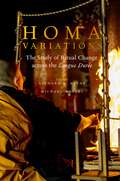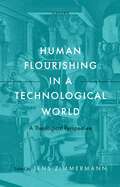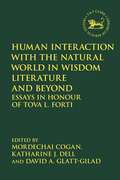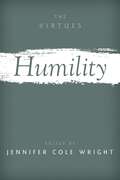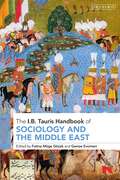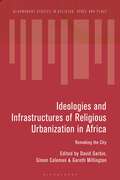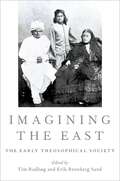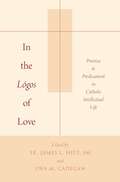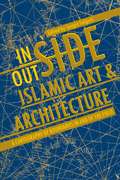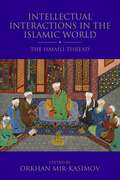- Table View
- List View
Homa Variations: The Study of Ritual Change across the Longue Durée (Oxford Ritual Studies)
Found in many different religious cultures, the practice of making votive offerings into fire dates back to the earliest periods of human history. Throughout the tantric world, this kind of ritual offering practice is known as the homa. With roots in Vedic and Zoroastrian rituals, the tantric homa was formed in early medieval India. Since that time tantric Buddhist practitioners transmitted it to East and Central Asia, and more recently to Europe and the Americas. Today, Hindu forms of the homa are being practiced outside of India as well. Despite this historical and cultural range, the homa retains an identifiable unity of symbolism and ritual form. Homa Variations is the first volume to provide a series of detailed studies of a variety of homa forms. This collection of essays provides an understanding of the history of the homa from its inception up to its use in the present. The book also covers homa practice throughout a wide range of religious cultures, from India and Nepal to Tibet, China, and Japan. The theoretical focus of the collection is the study of ritual change over long periods of time, and across the boundaries of religious cultures. The identifiable unity of the homa allows for an almost unique opportunity to examine ritual change with such a broad perspective.
Human Flourishing in a Technological World: A Theological Perspective
Human Flourishing in a Technological World addresses the question of human identity and flourishing in the light of recent technological advances. The chapters in Part I provide a philosophical-theological evaluation of changing major anthropological assumptions that have guided human self-understanding from antiquity to modernity: How did we move from a religious and mostly embodied anthropology of the person to the idea that we can upload human consciousness to computing platforms? How did we come to imagine that machines can actually be intelligent, or even learn in human fashion? Moreover, what metaphysical changes explain our mostly uncritical embrace of a technological determination of being and thus of how reality "works"? In Part II, the focus turns to the practical implications of our changing understanding of what it means to be human. Covering some of the most pressing current concerns about human flourishing, these chapters deal with the impact of technology on education, healthcare, disability, leisure and the nature of work, communication, aging, death, and the nature of wisdom for human flourishing in light of evolutionary biology. The volume includes the text of a lecutre by virtual reality engineer and computer scientist Jaron Lanier, and a discussion between Lanier and other contributors.
Human Interaction with the Natural World in Wisdom Literature and Beyond: Essays in Honour of Tova L. Forti (The Library of Hebrew Bible/Old Testament Studies)
Created in honor of the work of Professor Tova Forti, this collection considers the natural world in key wisdom books - Proverbs, Job and Qoheleth/Ecclesiastes, Ben Sira and Song of Songs/Solomon - and also examines particular animal and plant imagery in other texts in the Hebrew Bible. It crucially involves ancient Near Eastern parallels and like texts from the classical world, but also draws on rabbinic tradition and broader interpretative works, as well as different textual traditions such as the LXX and Qumran scrolls.Whilst the natural world, notably plants and animals, is a key uniting element, the human aspect is also crucial. To explore this, contributors also treat the wider concerns within wisdom literature on human beings in relation to their social context, and in comparison with neighbouring nations. They emphasize that the human, animal and plant worlds act together in synthesis, all enhanced and imbued by the world-view of wisdom literature.
Humility (The Virtues)
The 21st century has seen a renewed interest in cultivating positive character traits, or virtues, to foster personal growth. Humility is a virtue that has long been understood--especially by early theological thinking and Western philosophers--through its associations with meekness and servility. Even in more recent, secular contexts, humility is associated with low-mindedness, self-denigration, and even self-loathing. While it seems paradoxical that this virtue can be developed to achieve a sense of well-being, this volume provides a comprehensive exploration of humility as an admirable and desirable trait that allows us to place the needs of others before our own, keep our accomplishments in perspective, and fully realize our small place in the world. In a series of multidisciplinary essays spanning religious and secular traditions, this volume introduces readers to the many facets of humility. Essays explore perspectives from Christianity, Judaism, and Islam on the role of humility in determining how we should align ourselves with a higher spiritual power. Other essays examine the epistemic value of humility in the development of knowledge, and the applied nature of this virtue within the professional fields of politics, business management, nursing and hospice care, and competitive sports. This collection concludes by considering the possibility of humility as the most important virtue, foundational to the moral development and expression of all other virtues.
The I.B.Tauris Handbook of Sociology and the Middle East (I B Tauris Handbooks)
What we understand by the 'Middle East' has changed over time and across space. While scholars agree that the geographical 'core' of the Middle East is the Arabian Peninsula, the boundaries are less clear. How far back in time should we go to define the Middle East? How far south and east should we move on the African continent? And how do we deal with the minority religions in the region, and those who migrate to the West? Across this handbook's 52 chapters, the leading sociologists writing on the Middle East share their standpoint on these questions. Taking the featured scholars as constitutive of the field, the handbook reshapes studies on the region by piecing together our knowledge on the Middle East from their path-defining contributions. The volume is divided into four parts covering sociologists' perspectives on:· Social transformations and social conflict; from Israel-Palestine and the Iranian Revolution, to the Arab Uprisings and the Syrian War · The region's economic, religious and political activities; including the impact of the spread of Western modernity; the effects of neo-liberalism; and how Islam shapes the region's life and politics · People's everyday practices as they have shaped our understanding of culture, consumption, gender and sexuality · The diasporas from the Middle East in Europe and North America, which put the Middle East in dialogue with other regions of the world.The global approach and wide-ranging topics represent how sociologists enable us to redefine the boundaries and identities of the Middle East today.
Ideologies and Infrastructures of Religious Urbanization in Africa: Remaking the City (Bloomsbury Studies in Religion, Space and Place)
How do urbanization and development intersect with religious dynamics to shape contemporary African cityscapes? To answer this timely question, contributors from across Europe, North America and Africa are brought together to explore mega-cities including Lagos, Cape Town, Dar es Salaam and Kinshasa as powerful venues for the creation and implementation of religious models of urbanization and development. This book interrogates how religious socio-spatial models and strategies engage with challenges of infrastructural development, urban social cohesion, inequalities and inclusion. Chapters explore how faith-based practices of urban and infrastructural development link moral subjectivities with individual and wider aspirations for modernization, change, deliverance and prosperity. The volume brings together ethnographically rich and theoretically grounded case studies of religious urbanization across the African continent. It advances discussions of the ambivalent role of urban religion in development and documents the complex, multifaceted socio-cultural and political dynamics associated with religious urbanization in Africa.
Imagining the East: The Early Theosophical Society (Oxford Studies in Western Esotericism)
The Theosophical Society (est. 1875 in New York by H. P. Blavatsky, H. S. Olcott and others) is increasingly becoming recognized for its influential role in shaping the alternative new religious and cultural landscape of the late nineteenth and the twentieth century, especially as an early promoter of interest in Indian and Tibetan religions and philosophies. Despite this increasing awareness, many of the central questions relating to the early Theosophical Society and the East remain largely unexplored. This book is the first scholarly anthology dedicated to this topic. It offers many new details about the study of Theosophy in the history of modern religions and Western esotericism. The essays in Imagining the East explore how Theosophists during the formative period understood the East and those of its people with whom they came into contact. The authors examine the relationship of the theosophical approach with orientalism and aspects of the history of ideas, politics, and culture at large and discuss how these esoteric or theosophical representations mirrored conditions and values current in nineteenth-century mainstream intellectual culture. The essays also look at how the early Theosophical Society's imagining of the East differed from mainstream 'orientalism' and how the Theosophical Society's mission in India was distinct from that of British colonialism and Christian missionaries.
In Solidarity with the Earth: A Multi-Disciplinary Theological Engagement with Gender, Mining and Toxic Contamination (T&T Clark Explorations in Theology, Gender and Ecology)
Based on case studies, the book creates a multidisciplinary conversation on the gendered vulnerabilities resulting from extractive industries and toxic pollution, and also charts the resilience and courage of women as they resist polluting industries, fight for clean water and seek to protect the land. While ecumenical in scope, the book takes its departure from the concept of integral ecology introduced in Pope Francis' encyclical Laudato Si'. The first three sections of the book focus on the social and ecological challenges facing minoritized women and their communities that are related to mining, pollutants and biodiversity loss, and toxicity. The final section of the book focuses on the possibilities and obstacles to global solidarity. All chapters offer a cross disciplinary response to a particular local situation, tracing the ways ecological destruction, resulting from extraction and toxic contamination, affects the lives of women and their communities. The book pays careful attention to the political, economic, and legal structures facilitating these life-threatening challenges. Each section concludes with a response from a 'practitioner' in the field, representing an ecclesial organization or NGO focused on eco-justice advocacy in the global South, or minority communities in the global North.
In the Lógos of Love: Promise and Predicament in Catholic Intellectual Life
So much has changed about Catholic intellectual life in the half century since the end of the Second Vatican Council that it has become difficult to locate the core concepts that make up the tradition. In the Lógos of Love is a collection of essays that grew out of a 2013 conference on Catholic intellectual life co-sponsored by the University of Dayton and the Institute for Advanced Catholic Studies at the University of Southern California. The essays, written by scholars of theology, history, law, and media studies of religion, trace the history of this intellectual tradition in order to craft new tools for understanding the present day and approaching the future. Each essay explores both the promise of Catholic intellectual life and its various contemporary predicaments. How does a changed media landscape affect the way Catholicism is depicted, and the way its adherents understand and communicate among themselves? What resources can the tradition offer for reflection on new understandings of sexuality and gender? How can and should US Catholic intellectual life embrace and enhance-and introduce students to-the new ways in which Catholicism is becoming a more global tradition? What is the role of scholars in disciplines beyond theology? Of scholars who are not Catholic? Of scholars in universities not sponsored by Catholic religious orders or dioceses? By providing context for and proposing responses to these questions, the scholars invite discussion and reflection from a wide range of readers who have one important thing in common-a stake in sustaining a vibrant, flourishing intellectual tradition.
Indien verstehen: Thesen, Reflexionen und Annäherungen an Religion, Gesellschaft und Politik
Dieses Buch zeigt neue Wege auf, Indien zu verstehen. Hierzu werden aus kritischer Perspektive folgende fünf Thesen zu Politik, Gesellschaft und Kultur reflektiert: Es gibt kein Kastensystem. Es gibt keinen Hinduismus. Indien ist kein Beispiel für friedliche, inter-religiöse Koexistenz. Indien ist keine Weltmacht. Gandhi war kein Heiliger und kein Rassist. Diese Thesen eröffnen die Möglichkeit, konventionelle Indienbilder zu hinterfragen, mit dem Ziel, sich dem „Phänomen“ Indien durch veränderte Blickwinkel und neuen Erkenntnissen anzunähern. Der vorliegende Sammelband ist das Ergebnis eines Lehrforschungsprojektes, das an der Albert-Ludwigs-Universität Freiburg durchgeführt wurde.
Innovation and Competition in Zimbabwean Pentecostalism: Megachurches and the Marketization of Religion (Bloomsbury Studies in Black Religion and Cultures)
Using the concept of a “religious market”, this volume explores how African Traditional Religions and churches within Prophetic Pentecostalism in Zimbabwe seek to attract and retain members and clients.Chapters provide extensive coverage of two of the leading churches, namely, Emmanuel Makandiwa's United Family International Church (UFIC) and Walter Magaya's Prophetic Healing and Deliverance Ministries (PHD). Contributors also explore the strategies adopted by Pentecostalism in general, while others focus on African Traditional Religions. They show that although Prophetic Pentecostalism has gained a significant share of the market in Zimbabwe and in Southern Africa in general, it is not without controversy. In particular, it has been associated with the abuse of women and exploiting members and clients for financial gain.Innovation and Competition in Zimbabwean Pentecostalism is an important contribution to understanding the marketization of religion.
Inside/Outside Islamic Art and Architecture: A Cartography of Boundaries in and of the Field
When we walk into a gallery, we have a fairly good idea where the building begins and ends; and inside, while observing a painting, we are equally confident in distinguishing between the painting-proper and its frame and borders. Yet, things are often more complicated. A building defines an exterior space just as much as an interior, and what we perceive to be ornamental and marginal to a given painting may in fact be central to what it represents. In this volume, a simple question is presented: instead of dichotomous separations between inside and outside, or exterior and interior, what other relationships can we think of?The first book of its kind to grapple with this question, Inside/Outside Islamic Art and Architecture focuses on a wide spectrum of mediums and topics, including painted manuscripts, objects, architectural decoration, architecture and urban planning, and photography. Bringing together scholars with diverse methodologies-who work on a geographical span stretching from India to Spain and Nigeria, and across a temporal spectrum from the thirteenth to the twenty-first century-this original book also poses engaging questions about the boundaries of the field.
Insiders and Outsiders: Dilemmas of East European Jewry (The Littman Library of Jewish Civilization)
Insiders and Outsiders: Dilemmas of East European Jewry examines problems of Jewish cultural and political orientations, associations, and self-identification within a broad framework. The contributors approach the predicament of east European Jews in various settings: some focus primarily on the Jews' inner development and outlook, while others discuss how elements of the majority society viewed their presence. Scholars of history, art history, and literature display originality and insight in illuminating the nuances and intricacies of the Jewish ‘outsider’. Following an overview by the distinguished intellectual historian of German Jewry Steven Aschheim, who offers some comprehensive thoughts on the insider/outsider dilemma in modern times and its relevance to eastern Europe, the discussion evolves around three major themes: the cultural conundrum; modes of acculturation, assimilation, and identity; and the minority’s inclusion in or exclusion from the political agendas of certain east European societies. It concludes with a focus on two remarkable cities―Czernowitz and Vilnius―where the Jewish minority has often been conceived as being no less ‘inside’ than other groups. Contributors to the ‘cultural conundrum’ section deal with artists and writers from Romania and Poland who have gained wide public and critical attention over the years, including Reuven Rubin, Itzik Manger, Avot Yeshurun, and Mihail Sebastian. Other essays discuss the work of a group of writers from Poland, including Henryk Grynberg, Wilhelm Dichter, Joanna Olczak-Ronikier, Krzysztof Teodor Toeplitz, and Michal Glowinski, who reflected intensively on their experiences as Jews in the Second World War and tried to integrate these experiences into their often fractured identities. The complex personal evolution of these figures shows the multi-layered influences on their creativity and imagination, while underscoring the dilemmas they faced to find points of meeting between their Jewish background and their national identity. The section on modes of acculturation, assimilation, and identity offers detailed analyses of the ways in which multi-ethnic and multi-national situations demand that the ‘outsider’, consciously or unconsciously, develop inner strategies to fashion a specific identity. Surveying such vibrant areas as Czechoslovakia and Poland between the two world wars and the city of Lwów in the late nineteenth century, three essays present some of the choices Jews made in order to deal with the changing political and cultural context. Their meditations on belonging and not-belonging―on the constitution of identity and its fluidity, and on the formation, breakdown, and reconfiguration of physical, mental, social, and geographical borders―acquire a special relevance and urgency in these settings. How did Jews as ‘outsiders’ configure their political allegiance in eastern Europe? How prominent were they in the radical elements of the communist movement in Russia? What tactics did they employ to safeguard their future in such societies and what means did they employ to galvanize the ‘Jewish street’? These are some of the questions raised in the section on society and politics, which delves into such problematic terrain as ‘Jewish informers’, the ‘non-Jewish Jew’, and ‘Jewish politics’. The concluding essays examine the tensions, paradoxes, and ironies of the phenomenon of the Jewish outsider in Czernowitz and Vilnius, two cities where, indeed, Jews were often construed to be the true ‘insiders’.CONTRIBUTORS: Steven E. Aschheim, Karen Auerbach, Richard I. Cohen, Jonathan Frankel, Stefani Hoffman, Zvi Jagendorf, Hillel J. Kieval, Rachel Manekin, Amitai Mendelsohn, Joanna B. Michlic, Antony Polonsky, David Rechter, Scott Ury, Leon Volovici, Ruth R. Wisse, Mordechai Zalkin
An Intellectual History of Liberal Catholicism in Western Europe, 1789-1870
This volume probes and deciphers the tensions and contradictions that underlie modern European Liberal Catholicism. Beginning with the French revolution and looking at dialogues between European 'public moralists', the book discusses the ways in which liberal Catholics loosened their bonds with religion, all the while relying on it. It reflects on how and why they promoted a post-revolutionary state and society based on religious dogma and morality, and what new liberal order and socio-political and religious models they proposed. Beyond the analysis of the work of these Catholic intellectuals, the question of their conceiving a specific liberal approach through Catholicism is also investigated. More generally, it prompts a vital reappraisal of the political, ideological and philosophical pressures that the religious question caused in the redefinition of Western European post-revolutionary liberalism.
Intellectual Interactions in the Islamic World: The Ismaili Thread (Shi'i Heritage Series)
How has the Ismaili branch of Shi'i Islam interacted with other Islamic communities throughout history? The groups and movements that make up Islamic civilisation are diverse and varied yet, while scholarship has analysed many branches of Islam in isolation, the exchanges and mutual influences between them has not been sufficiently recognised. This book traces the interactions between Ismaili intellectual thought and the philosophies of other Islamic groups to shed light on the complex and interwoven nature of Islamic civilisation.Based on a broad range of primary sources from the early medieval to the late nineteenth century, the book brings together different disciplines within Islamic Studies to cover polemical and doctrinal literature, law, mysticism, rituals and philosophy. The main Ismaili groups, such as the Fatimids, Nizaris and Tayyibis, are represented, as well as lesser known traditions such as that associated with the mountain region of Badakhshan in Central Asia. Religious syncretism, particularly in the Indian subcontinent and in Yemen, is considered alongside cultural interactions as reflected in the circulation of books in Fatimid markets, and various literary and mythical traditions, some still little explored. The chapters include contributions from leading experts in the field shed new light on the close and complex relationships very different Islamic groups and movements have enjoyed throughout the centuries.
Interconnectivity, Subversion, and Healing in World Christianity: Essays in honor of Joel Carpenter
The rise of Christianity around the world has been the impetus for much religious and social change. The interconnectivity of religious centers has resulted in theological dialogue and innovation. The subversion of long-held categories of culture, gender, race, spirituality, theology, and politics has naturally occurred along with the transgressing of borders and boundaries. Yet at the same time, there has been occasion for healing through intercultural experiences of forgiveness, peacemaking, and reconciliation.Stimulated by the work and mentorship of Joel Carpenter, who has done much to expand the study of world Christianity less through focusing on his own research and writing, and more through amplifying the voices of others, the international contributors to this volume from all six continents promote a deeper understanding of World Christianity through the exploration of such related themes.Whether discussing primal spirituality in northeast India, white supremacy in South Africa, evangelical women and civic engagement in Kenya, or Calvinism in Mexico, the contributors draw upon ethnographic case studies to more deeply understand interconnectivity, subversion, and healing in World Christianity. Their essays provoke a reorientation of Christian thought within the study of World Christianity, enriching the current discourse and promoting vistas for further interdisciplinary studies.
Interreligious Encounters in Europe: Sites, Materialities and Practices (Routledge Studies in Religion)
This book examines interreligious dialogue in Europe and how interreligious encounters are framed, expressed and practised. Throughout Europe religious identities have increasingly become significant categories within debates on migration, cohesion, diversity and belonging. By focusing on the spatialities, materialities and practices of interreligious dialogues and encounters, the volume sheds light on the heterogeneous domains where the visibility and inclusion of religious and cultural differences are currently negotiated and contested. The chapters draw on social science perspectives and include a range of empirical case studies from a variety of European settings. The contributions (a) shed light on the subjectivities, relations and modes of behaviour produced, negotiated and contested in and through locally embedded interreligious encounters and dialogue-oriented practices, (b) observe the power dynamics that shape those practices and encounters and (c) discuss their implications for the place(s) of religion in the public sphere. Overall the book contributes to a better understanding of how cultural, religious and political identities are reconfigured across Europe.
The Invisible Medium: Public, Commercial and Community Radio (Communications and Culture)
...the book is recommended and should be read by every member of the IRTC. Those working in radio will also find it rewarding.' - Playback
Iran After the Mongols (The Idea of Iran)
Following the devastating Mongol conquest of Baghdad in 1258, the domination of the Abbasids declined leading to successor polities, chiefly among them the Ilkhanate in Greater Iran, Iraq and the Caucasus. Iranian cultural identities were reinstated within the lands that make up today's Iran, including the area of greater Khorasan. The Persian language gained unprecedented currency over Arabic and new buildings and manuscripts were produced for princely patrons with aspirations to don the Iranian crown of kingship. This new volume in “The Idea of Iran” series follows the complexities surrounding the cultural reinvention of Iran after the Mongol invasions, but the book is unique capturing not only the effects of Mongol rule but also the period following the collapse of Mongol-based Ilkhanid rule. By the mid-1330s the Ilkhanate in Iran was succeeded by alternative models of authority and local Iranian dynasties. This led to the proliferation of diverse and competing cultural, religious and political practices but so far scholarship has neglected to produce an analysis of this multifaceted history in any depth. Iran After the Mongols offers new and cutting-edge perspectives on what happened. Analysing the fourteenth century in its own right, Sussan Babaie and her fellow contributors capture the cultural complexity of an era that produced some of the most luminous masterpieces in Persian literature and the most significant new building work in Tabriz, Yazd, Herat and Shiraz. Featuring contributions by leading scholars, this is a wide-ranging treatment of an under-researched period and the volume will be essential reading for scholars of Iranian Studies and Middle Eastern History.
Iran at the Crossroads
At the dawn of the 21st century, we are witnessing the redefining and reforming of the Islamic Republic, a struggle between the President Khatami's reformist agenda and more militant conservative forces led by Ayatollah Khameni, Iran's Supreme Religious Guide. The Islamic Republic of Iran at 20 is a place of new promises and aspirations whose political, economic ,and socioeconomic struggles have significance not only for Iranians but also for Iran's relations with the international community. Iran at the Crossroads provides an intimate view of Iran, domestically and internationally, and the current struggle to reconstruct and thus relegitimate the revolution. This volume includes essays by American, European, and Iranian scholars writing on the extraordinary changing situation in Iran today.
Iranian Romance in the Digital Age: From Arranged Marriage to White Marriage (Sex, Family and Culture in the Middle East)
Following the 1979 Islamic Revolution, there was a dramatic reversal of women's rights, and the state revived many premodern social conventions through modern means and institutions. Customs such as the enforced veiling of women, easy divorce for men, child marriage, and polygamy were robustly reintroduced and those who did not conform to societal strictures were severely punished. At the same time, new social and economic programs benefited the urban and rural poor, especially women, which had a direct impact on gender relations and the institution of marriage.Edited by Janet Afary and Jesilyn Faust, this interdisciplinary volume responds to the growing interest and need for literature on gender, marriage and family relations in the Islamic context. The book examines how the institution of marriage transformed in Iran, paying close attention to the country's culture and politics. Part One examines marital changes in the rural and tribal sectors of society through the works of anthropologists Erika Friedl and Mary Hegland. Part Two turns its eye to look at changes in urban marriages to new forms of cohabitation. In Part Three, the contributors explore the way technology and social media has impacted and altered the institution of family. Based on the work of new and established scholars, the collection provides an up-to-date study of an important and intensely politicized subject.
Irreverence and the Sacred: Critical Studies in the History of Religions
Irreverence and the Sacred brings together some of the most cutting edge, interdisciplinary, and international scholars working today in order to debate key issues in the critical and comparative study of religion. The project is inspired in large part by the work of Bruce Lincoln, whose influential and wide-ranging scholarship has consistently posed challenging, provocative, and often-irreverent questions that have really pushed the boundaries of the field of religious studies in important, sometimes controversial ways. Retracing the history of the discipline of religious studies, Lincoln argues that the field has tended to champion a "validating, feel-good" approach to religion, rather than posing more critical questions about religious claims to authority and their role in history, politics, and social change. A critical approach to the history of religions, he suggests, would focus on the human, temporal, and material aspects of phenomena that are claimed to have a superhuman, eternal, or transcendent status. This volume takes up Lincoln's challenge to "do better," by engaging in critical analyses of four key themes in the study of religion: myth, ritual, gender, and politics. The book also interrogates the "politics of scholarship" itself, critically examining the relations of power and material interests at work in the study as well as the practice of religion. The scholars involved in this project include not only some of the most important figures in the American study of religion--such as Wendy Doniger, Russell McCutcheon, Ivan Strenski, and Lincoln himself--but also European scholars whose work is hugely influential overseas but not as well known in the U.S.--such as Stefan Arvidsson, Claude Calame, Nicolas Meylan, and others.
Islam [4 volumes]: A Worldwide Encyclopedia [4 volumes]
This expansive four-volume encyclopedia presents a broad introduction to Islam that enables learning about the fundamental role of Islam in world history and promotes greater respect for cultural diversity.One of the most popular and widespread religions in the world, Islam has attracted a great deal of attention in recent times, particularly in the Western world. With the ongoing tensions in the Middle East and a pervasive sense of hostility toward Arab Americans, there is ever increasing need to examine and understand Islam as a religion and historical force. Islam: A Worldwide Encyclopedia provides some 700 entries on Islam written by expert contributors that cover the religion from the birth of Islam to the present time. The set also includes 16 pages of color images per volume that serve to illustrate the diverse expressions of this important religious tradition.Each entry begins with a basic introduction, followed by a general discussion of the subject and a conclusion. Each entry also features a further readings list for readers. In addition to supplying a comprehensive, authoritative overview of Islam, this work also specifically addresses many controversial related issues, including jihad, violence in Islam, polygamy, and apostasy.
Islam after Liberalism
Forged in the age of empire, the relationship between Islam and liberalism has taken on a sense of urgency today, when global conflicts are seen as pitting one against the other. More than describing a civilizational fault-line between the Muslim world and the West, however, this relationship also offers the potential for consensus and the possibility of moral and political engagement or compatibility. The existence or extent of this correspondence tends to preoccupy academic as much as popular accounts of such a relationship. This volume looks however to the way in which Muslim politics and society are defined beyond and indeed after it. Reappraising the 'first wave' of Islamic liberalism during the nineteenth century, the book describes the long and intertwined histories of these categories across a large geographical expanse. By drawing upon the contributions of scholars from a variety of disciplines -- including philosophy, theology, sociology, politics and history -- it explores how liberalism has been criticised and refashioned by Muslim thinkers and movements, to assume a reality beyond the abstractions that define its compatibility with Islam.
Islam and its Past: Jahiliyya, Late Antiquity, and the Qur'an (Oxford Studies in the Abrahamic Religions)
Islam and its Past: Jāhiliyya, Late Antiquity, and the Qur'an brings together scholars from various disciplines and fields to consider Islamic revelation, with particular focus on the Qur'an. The collection provides a wide-ranging survey of the development and current state of Qur'anic studies in the Western academy. It shows how interest in the field has recently grown, how the ways in which it is cultivated have changed, how it has ramified, and how difficult it now is for any one scholar to keep abreast of it. Chapters explore the milieu in which the Meccan component of the Qur'an made its appearance. The general question is what we can say about that milieu by combining a careful reading of the relevant parts of the Qur'an with what we know about the religious trends of Late Antiquity in Arabia and elsewhere. More specifically, the issue is what we can learn in this way about the manner in which the 'polytheists' of the Qur'an related to the Jewish and Christian traditions: were they Godfearers in the sense familiar from the study of ancient Judaism? It looks at the Qur'an as a text of Late Antiquity-not just considering those features of it that could be seen as normal in that context, but also identifying what is innovative about it against the Late Antique background. Here the focus is on the 'believers' rather than the 'polytheists'. The volume also engages in different ways with notions of monotheism in pre-Islamic Arabia. This collection provides a broad survey of what has been happening in the field and concrete illustrations of some of the more innovative lines of research that have recently been pursued.
